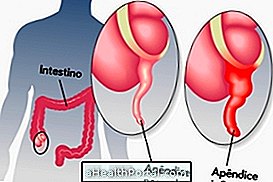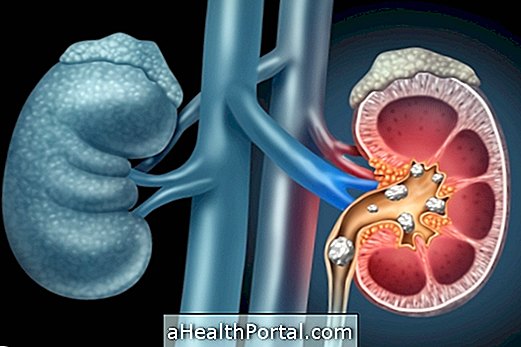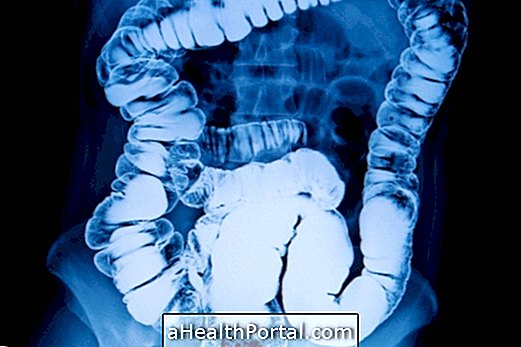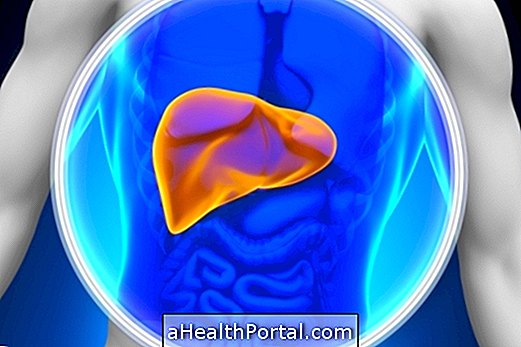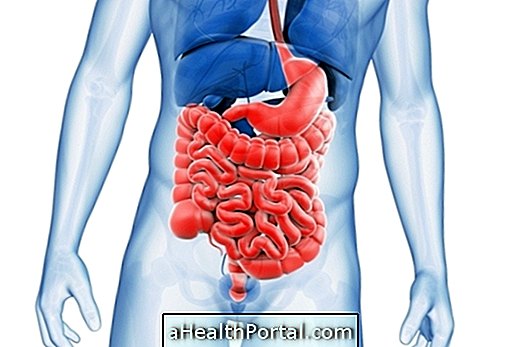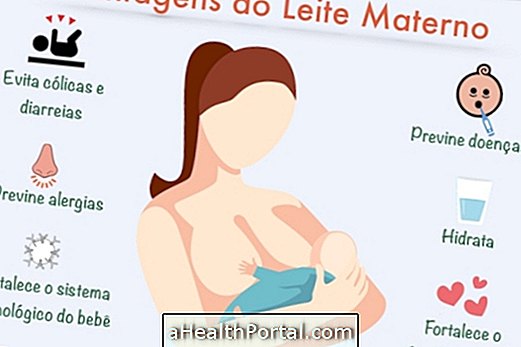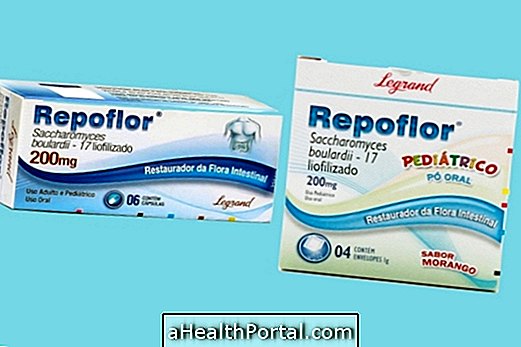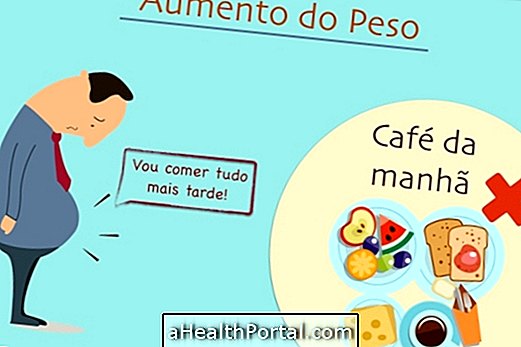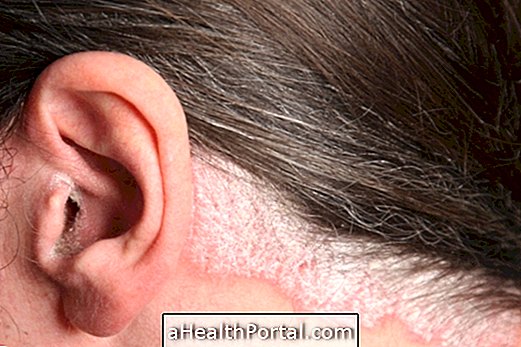Erosive esophagitis is a situation in which there is the formation of lesions in the esophagus due to chronic gastric reflux, which leads to the appearance of some symptoms such as pain when eating and drinking fluids and the presence of blood in vomit or feces.
The treatment of this condition is usually done by the gastroenterologist who can recommend the use of medicines to avoid excess and even inhibit the production of gastric juice, since in more serious situations surgery may be indicated. In addition, it is also necessary to follow the nutritionist, to indicate what changes should be made in eating habits.

Main symptoms
Symptoms of erosive esophagitis depend on the degree of lesions in the esophagus, but usually include:
- Vomiting that may contain blood or not;
- Pain when eating or consuming liquids;
- Blood in the stool;
- Sore throat;
- Hoarseness;
- Chest pain;
- Chronic cough.
In addition, when erosive esophagitis is not treated, it is also possible that iron deficiency anemia develops and increases the risk of a tumor in the esophagus. Thus, it is important that the gastroenterologist be consulted as soon as the first signs and symptoms of esophagitis appear, as this way it is possible to start treatment right away. See more details on how to identify esophagitis.
How to confirm the diagnosis
The diagnosis of erosive esophagitis is initiated by the gastroenterologist through the evaluation of the symptoms presented, as well as the factors that improve or worsen the intensity of the symptoms.
However, to confirm the diagnosis, and to determine the severity of the situation, an endoscopy is recommended, which allows the size of the lesions to be observed and the erosive esophagitis to be classified according to the Los Angeles protocol.
Los Angeles Classification
The Los Angeles classification aims to separate lesions from erosive esophagitis according to severity, so that the most appropriate treatment to treat the lesion can be decided.
Degree of severity of the injury
Features
THE
1 or more erosions smaller than 5 mm.
B
1 or more erosions greater than 5 mm, but which do not join with others.
Ç
Erosions that come together, involving less than 75% of the organ.
D
Erosions that are at least 75% of the circumference of the esophagus.
When erosive esophagitis lesions are grade C or D and recurrent, there is an increased risk of cancer of the esophagus, so it may be necessary that surgical treatment be indicated first, before the use of medications is recommended.
Causes of erosive esophagitis
Erosive esophagitis is in most cases the result of untreated esophagitis, which causes lesions to continue to appear and result in the development of symptoms.
In addition, another situation that favors the development of esophagitis is gastroesophageal reflux, because the acidic content of the stomach reaches the esophagus and promotes mucosal irritation, favoring the appearance of lesions.
Erosive esophagitis can also occur more frequently in people who smoke or as a result of consuming industrialized and fatty foods.
Learn more about the causes of esophagitis in the following video:

How the treatment is done
The treatment for erosive esophagitis depends on what caused it, but it is usually done with the accompaniment of a nutritionist who will indicate the suspension of the use of cigarettes, if any, reduction of consumption of industrialized and fatty foods, in addition to weight loss in the cases of overweight or obese people.
It may still be necessary to make use of remedies such as:
- Proton pump inhibitors (PPIs), such as omeprazole, esomeprazole or lansoprazole: which inhibit the production of gastric juice by the stomach, thus preventing them from reaching the esophagus;
- Histamine inhibitors, such as ranitidine, famotidine, cimetidine and nizatidine: are used when PPIs do not produce the expected effect and also help to reduce the amount of acid in the stomach;
- Prokinetics, such as domperidone and metoclopramide: used to accelerate the emptying of the stomach.
If the person uses anticholinergic remedies, such as Artane or Akineton, as well as calcium channel blockers, such as Anlodipino and Verapamil, the gastroenterologist may pass specific recommendations on how to use the prescribed medications.
The use of surgery for erosive esophagitis is only indicated if the lesions do not improve or when the symptoms are persistent and all previous treatment options have already been used. This surgery consists of reconstructing a small valve that connects the stomach to the esophagus, thus preventing gastric juice from returning through this path and causing new injuries.
How treatment is done in pregnant women
In the case of pregnant women, in addition to monitoring with a nutritionist and daily care, it is recommended to use only histamine inhibitors, such as ranitidine, cimetidine, nizatidine and famotidine, as they are safer to use at this stage, in addition to not being absorbed by milk during its production.
Other necessary care
In addition to the medical treatment indicated, it is still necessary to follow daily guidelines to have a better quality of life and avoid the discomfort of symptoms:
- Raise approximately 15 cm to 30 cm from the head of the bed;
- Reduce the intake of citrus fruits, drinks containing caffeine, alcohol or carbonated, and foods such as mint, eucalyptus, mint, tomato, chocolate;
- Avoid lying down for two hours after the last meal.
These precautions are similar to those used by people with reflux, as they help prevent stomach acid from going up into the esophagus. See other tips on how to treat reflux, which can also be used to prevent esophagitis.
In the following video, nutritionist Tatiane Zanin, shows how to raise the head of the bed, in addition to giving great tips to naturally relieve the discomfort of reflux, which is the cause of erosive esophagitis:

Was this information helpful?
Yes No
Your opinion is important! Write here how we can improve our text:
Any questions? Click here to be answered.
Email in which you want to receive a reply:
Check the confirmation email we sent you.
Your name:
Reason for visit:
--- Choose your reason --- DiseaseLive betterHelp another personGain knowledge
Are you a health professional?
NoMedicalPharmaceuticalsNurseNutritionistBiomedicalPhysiotherapistBeauticianOther
Bibliography
- A B C D. BRAZILIAN DIGESTIVE SURGERY ARCHIVES. Diagnosis And Treatment Of Gastroesophageal Reflux Disease. 2014. Available at:. Accessed on 30 Sep 2020
- JBM. Gastroesophageal reflux disease . 2014. Available at:. Accessed on 30 Sep 2020
- AMB. Clinical manifestations of gastroesophageal reflux disease and the findings found in upper gastrointestinal endoscopy in adults.. 2011. Available at:. Accessed on 30 Sep 2020
